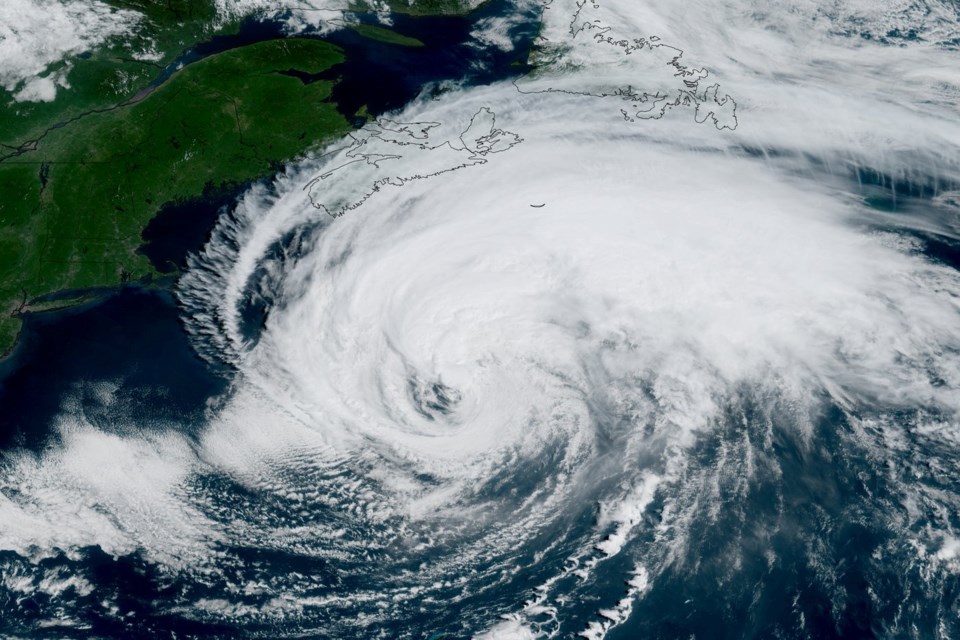A powerful storm moving its way up the Atlantic Ocean could cause some unwelcome disruptions for firefighters battling wildfires in Newfoundland and Labrador, says Premier John Hogan.
Environment Canada said Hurricane Erin should stay far offshore but will bring dangerous surf and gusty winds over coastal areas of southwestern Nova Scotia and the southeastern Avalon Peninsula.
"If the hurricane affects us, absolutely it will affect the firefighters. Rain will certainly be welcome. Wind certainly will not. And if it gets very bad, of course, we'll have to pull not only the air assets out, but the firefighters as well," Hogan told reporters Friday. "As we've said from Day 1, safety is the most important thing."
Nova Scotia officials said they are "as prepared as possible" for strong, shifting winds that could affect firefighting efforts.
The Long Lake wildfire in Annapolis Valley, remains out of control and has scorched more than 32 square kilometres of ground. However, there have been no reports of homes that have been destroyed, they said.
In New Brunswick, there are 18 active fires with three of them reported to be out of control.
Back in Newfoundland and Labrador, Hogan said a wildfire near Kingston in Conception Bay North continued to burn out of control and is estimated at 101 square kilometres.
When it is safe, he said officials are considering busing people to the communities destroyed by wildfires so they can have a look at the damage.
PAL Aerospace has conducted aerial thermal scans of all the three wildfire areas — Martin Lake fire in the central part of the province and the Paddy’s Pond Fire outside St. John’s, N.L., along with the Kingston blaze — to identify areas of concern, he said.
"Once this data is collected and analyzed, this information is used by the incident management team to formulate plans of attack moving forward."
As firefighters get a handle on the fires they are able to better assess the damage caused by the blazes.
Gary Murray, Newfoundland Power president said the utility had identified 200 of the 1,750 power poles damaged by the wildfires.
The utility will replace 125 of those and the remaining will be restored after property reconstruction, he said.
"What that really means is that it is still an active fire area, so it depends upon conditions, we may or may not have access to certain areas," Murray said.
Hogan downgraded the number of structures lost to the fire from 203 to 196, saying crews have had a chance to closely assess the structures lost.
"That's probably not to be unexpected, and we'll continue to make sure we get all that accurate information as we can as we continue to contact people who have lost homes or lost structures," he said.
This report by The Canadian Press was first published Aug. 22, 2025.
The Canadian Press




